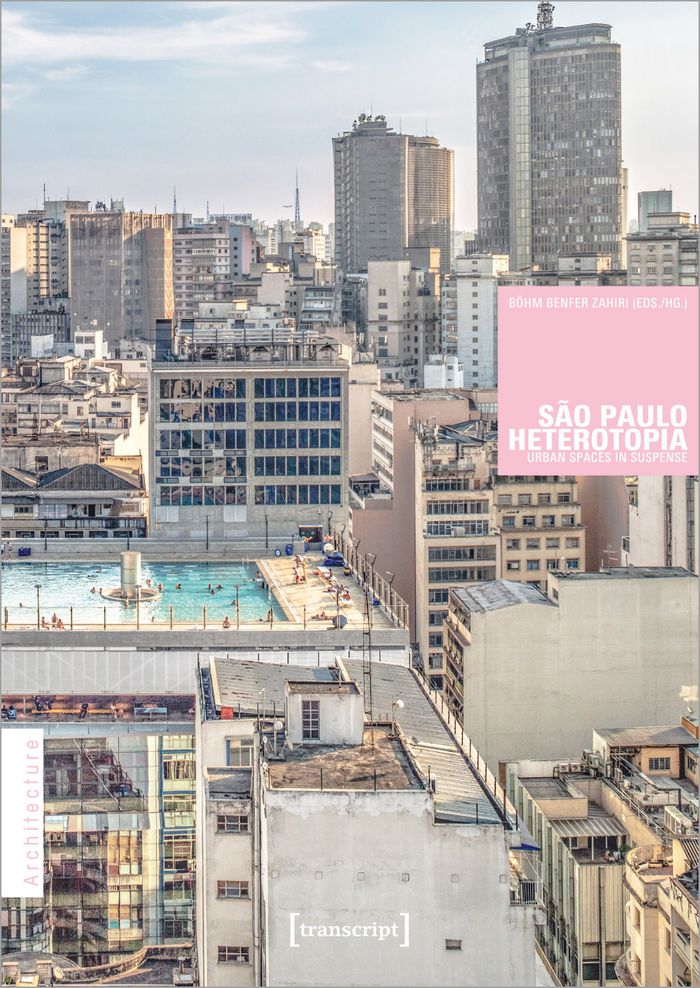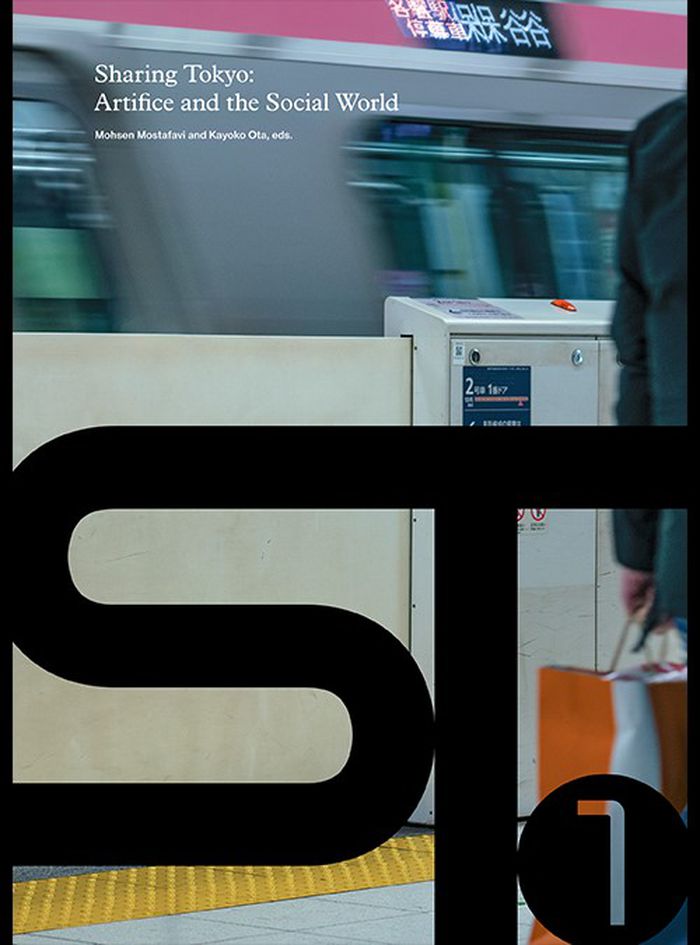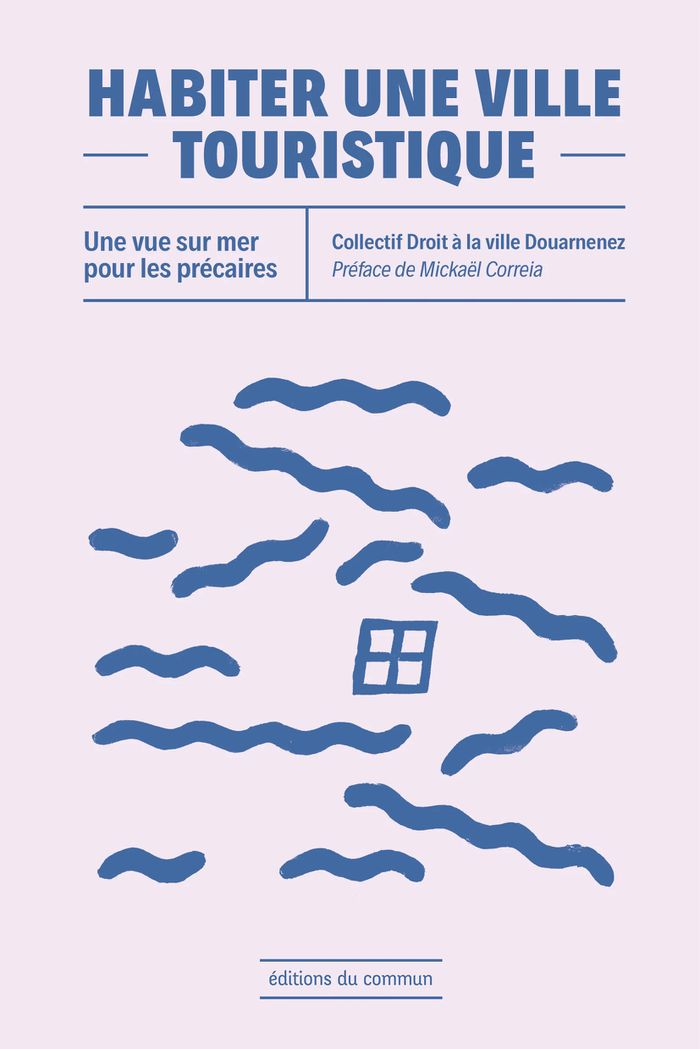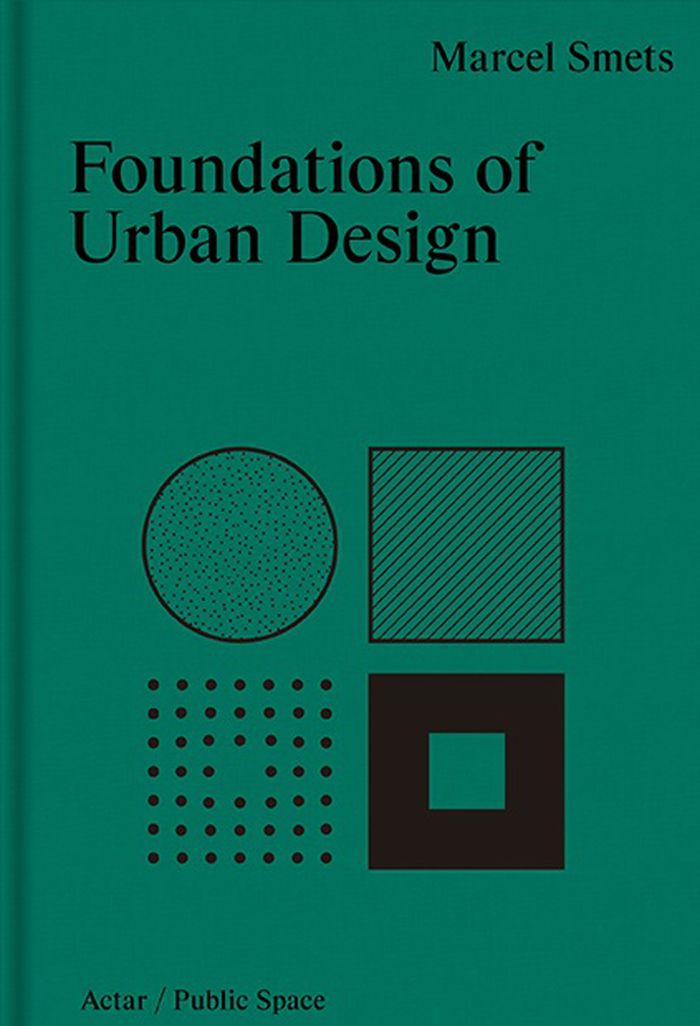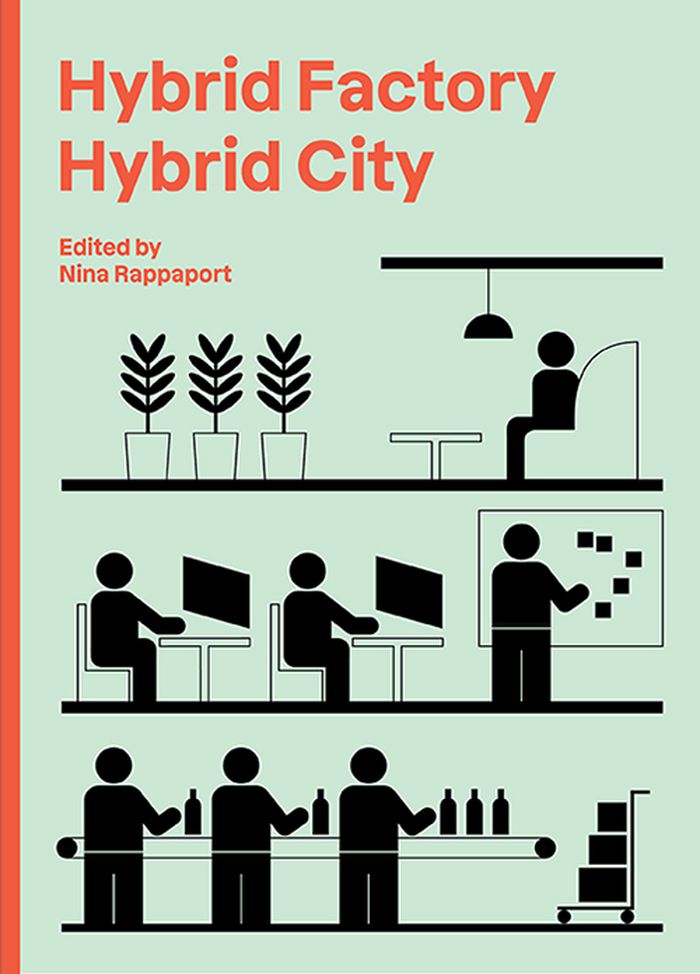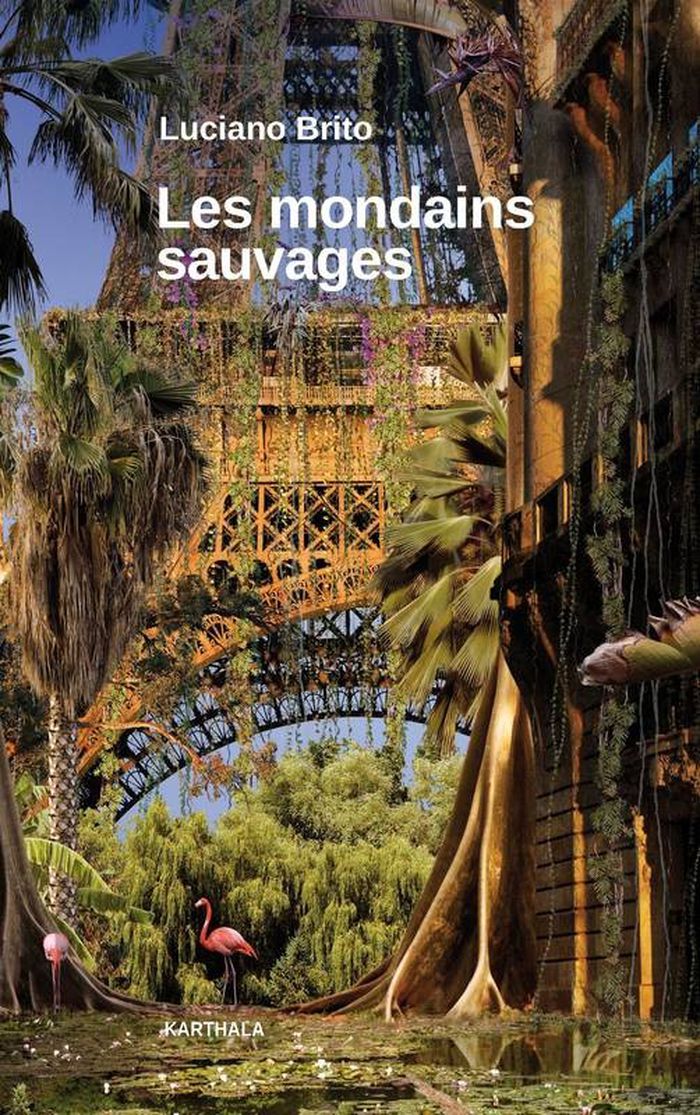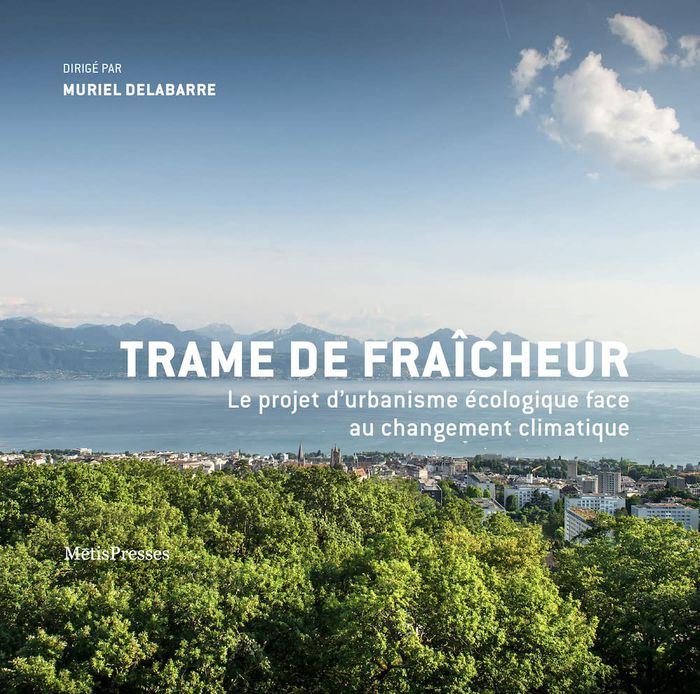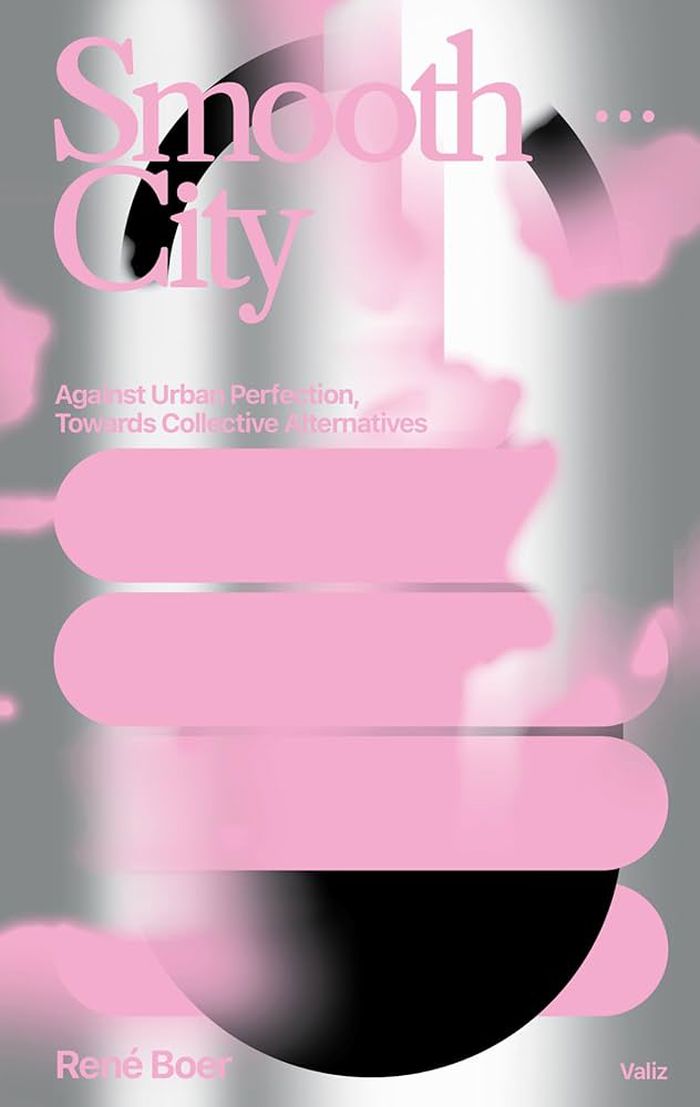$54.95
(available to order)
Summary:
Public and private, traffic and open space, planned and spontaneous – our idea of a city is characterised by opposites. However, the contributors to this bilingual book show that these poles can also be consciously connected. The urban building blocks from São Paolo present surprisingly idiosyncratic city scenes: People dancing along the motorway, strolling through the(...)
Sao Paulo Heterotopia: Urban spaces in suspense
Actions:
Price:
$54.95
(available to order)
Summary:
Public and private, traffic and open space, planned and spontaneous – our idea of a city is characterised by opposites. However, the contributors to this bilingual book show that these poles can also be consciously connected. The urban building blocks from São Paolo present surprisingly idiosyncratic city scenes: People dancing along the motorway, strolling through the stone archipelago, splashing around in front of the city skyline… Many of the case studies are linked to the ideas of the Brazilian urban planner Francisco Prestes Maia. As early as in the 1930s, he developed concepts that combine traffic, open space and architecture – a surprisingly contemporary approach.
Urban Theory
$60.00
(available to order)
Summary:
The book questions how ''artifice'' and the ''social world'' can be mutually and constructively integrated so that the contemporary urban space can be shared by all. Taking the example of Tokyo, it takes up the two major traits in urban transformation – the large-scale development model on the one hand, and the small-scale model of neighborhood development or preservation(...)
Sharing Tokyo: Artifice and the social world
Actions:
Price:
$60.00
(available to order)
Summary:
The book questions how ''artifice'' and the ''social world'' can be mutually and constructively integrated so that the contemporary urban space can be shared by all. Taking the example of Tokyo, it takes up the two major traits in urban transformation – the large-scale development model on the one hand, and the small-scale model of neighborhood development or preservation on the other – and instead seeks alternative ideas and new strategies. A variety of innovative practices are presented by a diverse group of contributors including renowned scholars, architects, urbanists, and photographers from Japan and the US, and the research team at the Harvard University Graduate School of Design. While the discourses and architectural works presented deal with the specificity of Tokyo, they were carefully selected to formulate together a collection of insights, new perspectives, and speculative experiments in urbanism and architecture that can also be used in other contexts.
Urban Theory
$29.95
(available to order)
Summary:
Ouvrage inédit, qui s’attache à décrire les mécanismes de touristification des villes côtières, cet essai montre comment ceux-ci mettent au ban une partie importante et précarisée des populations locales. À partir de l’exemple de la ville de Douarnenez, le collectif a mené une riche enquête dont ce livre restitue les principaux éléments. Analyses, entretiens et focus(...)
Habiter une ville touristique : Une vue sur mer pour les précaires
Actions:
Price:
$29.95
(available to order)
Summary:
Ouvrage inédit, qui s’attache à décrire les mécanismes de touristification des villes côtières, cet essai montre comment ceux-ci mettent au ban une partie importante et précarisée des populations locales. À partir de l’exemple de la ville de Douarnenez, le collectif a mené une riche enquête dont ce livre restitue les principaux éléments. Analyses, entretiens et focus historiques, c’est par un travail fourni et protéiforme que le collectif produit la critique de ce processus déjà à l’œuvre dans de nombreuses villes européennes et mondiales.
Urban Theory
books
$47.95
(available to order)
Summary:
Builders, Housewives and the Construction of Modern Athens reassesses the explosive growth of postwar Athens through its most distinctive building type, the polykatoikía, and its different connotations through the decades: from a monotonous and ugly element of the city to the role it might play in the urban sustainability. Sprawling beneath the Acropolis, modern Athens(...)
Builders, housewives, and the construction of modern Athens
Actions:
Price:
$47.95
(available to order)
Summary:
Builders, Housewives and the Construction of Modern Athens reassesses the explosive growth of postwar Athens through its most distinctive building type, the polykatoikía, and its different connotations through the decades: from a monotonous and ugly element of the city to the role it might play in the urban sustainability. Sprawling beneath the Acropolis, modern Athens is commonly viewed in negative terms: congested, ugly and monotonous. Builders, Housewives and the Construction of Modern Athens questions this stereotype, reassessing the explosive growth of postwar Athens through its most distinctive building type: the polykatoikía (a small-scale multistory apartment block). Theocharopoulou re-evaluates the polykatoikía as a low-tech, easily constructible innovation that stimulated the postwar urban economy, triggering the city's social mid-twentieth-century transformation. The interiors of the polykatoikía apartments reflect a desire for modernity as marketed to housewives through film and magazines. Regular builders became unlikely allies in designing these polykatoikía interiors, enabling inhabitants to exert agency over their daily lives and the shape of the postwar city. This revised edition of Theocharopoulou's study draws on popular media as well as urban and regional planning theory, cultural studies and anthropology to examine the evolution of this phenomenon. Written in the light of Greece's recent financial crisis, the book's updated Postscript considers the role polykatoikía might play in building an equitable and sustainable twenty-first-century city.
books
September 2022
Urban Theory
Foundations of urban design
$54.00
(available to order)
Summary:
The book is structured into twenty-nine essays, each dedicated to a pair of urbanistic concepts. Discussing historical and contemporary, interpretive and designerly approaches to urbanity, the notions composing the 29 pairs relate dialectically, as theses-and-antitheses. Still, we are warned, ''the presented antagonisms are not a priori in opposition, but rather complementary.''
Foundations of urban design
Actions:
Price:
$54.00
(available to order)
Summary:
The book is structured into twenty-nine essays, each dedicated to a pair of urbanistic concepts. Discussing historical and contemporary, interpretive and designerly approaches to urbanity, the notions composing the 29 pairs relate dialectically, as theses-and-antitheses. Still, we are warned, ''the presented antagonisms are not a priori in opposition, but rather complementary.''
Urban Theory
Hybrid factory, hybrid city
$54.95
(available to order)
Summary:
Now that urban industry is often clean, green, small, and quiet it can be integrated at the city and building scale with other uses. Although little explored as of yet, we don’t yet know what this new hybrid will look like and how can it support new entrepreneurs, equitable jobs, and vital urban forms? How can hybrid models change with new technologies, sustainable(...)
Hybrid factory, hybrid city
Actions:
Price:
$54.95
(available to order)
Summary:
Now that urban industry is often clean, green, small, and quiet it can be integrated at the city and building scale with other uses. Although little explored as of yet, we don’t yet know what this new hybrid will look like and how can it support new entrepreneurs, equitable jobs, and vital urban forms? How can hybrid models change with new technologies, sustainable manufacturing, and advanced production systems to create new open city? Can we break the planning and land-use patterns of segregated zoning by class and function and encourage mixed-use zoning that transforms new building and zoning codes and this the mix in the city? These questions and more are addressed in Hybrid Factory / Hybrid City, through a collection of essays by participants in the eponymous symposium organized by Nina Rappaport at the Future Urban Legacy Lab of the Politecnico di Torino. Divided into two sections, the essays describes projects and research by architects and urbanists regarding the aura of industry and its smells, its place in relationship to the body, building structures, logistics centers, reused factory buildings, and their current and future potential for mixed-use. Social and economic equity can be integrated through light manufacturing jobs, community uses, and affordable housing.
Urban Theory
$23.00
(available to order)
Summary:
Est-il inconcevable de transformer radicalement les manières actuelles de penser et de fabriquer la ville, où élus, concepteurs et promoteurs s’affrontent dans un climat de forte pression économique qui favorise une esthétique médiocre, fragmente le territoire et aboutit toujours à la prédation du vivant et de la nature ? Face à la crise climatique, on ne peut plus se(...)
L'inconcevable : Penser la ville après
Actions:
Price:
$23.00
(available to order)
Summary:
Est-il inconcevable de transformer radicalement les manières actuelles de penser et de fabriquer la ville, où élus, concepteurs et promoteurs s’affrontent dans un climat de forte pression économique qui favorise une esthétique médiocre, fragmente le territoire et aboutit toujours à la prédation du vivant et de la nature ? Face à la crise climatique, on ne peut plus se satisfaire de petits arrangements, il faut changer de paradigme. Dans cet essai très documenté, Nicolas Michelin propose de nouveaux principes de travail, assortis d’un certain nombre de mesures à caractère obligatoire, et esquisse les bases d’un ré-attachement indispensable à la Terre.
Urban Theory
Les mondains sauvages
$54.95
(available in store)
Summary:
Cet essai renverse le regard porté sur les récits d’arrivées dans les grandes villes : et si ces «romans d’apprentissages», ces «romans de migrations», au lieu d’être des trajectoires d’émancipation, n’étaient-ils pas plutôt des romans d’ensauvagement ? La ville, l’urbanité n’est pas le stade ultime de la civilisation : au sein de sociétés capitalistes et inégalitaires,(...)
Les mondains sauvages
Actions:
Price:
$54.95
(available in store)
Summary:
Cet essai renverse le regard porté sur les récits d’arrivées dans les grandes villes : et si ces «romans d’apprentissages», ces «romans de migrations», au lieu d’être des trajectoires d’émancipation, n’étaient-ils pas plutôt des romans d’ensauvagement ? La ville, l’urbanité n’est pas le stade ultime de la civilisation : au sein de sociétés capitalistes et inégalitaires, c’est bien le mythe positif de la ville contemporaine qu’il faut revoir à nouveaux frais. À partir des chefs-d’œuvre de Marcel Proust, d’Osman Lins, de V. S. Naipaul, de Joyce Carol Oates et de Roberto Bolaño, l’auteur s’attache à définir ce qu’il entend par « mondains sauvages » : lorsque la ville est une erreur, un cauchemar, les personnages travaillent à leur propre dépossession. Les villes sont malades, trouées, névrosées – dessinant des paysages labyrinthiques. Luciano Brito analyse comment émerge une poétique sous le signe du devenir-végétal de l’urbain. Le croisement audacieux des grands romanciers du XXe siècle à travers le monde propose ainsi une vision renouvelée des grandes villes, du bidonville à la mégapole, de l’agglomération branchée aux faubourgs sales.
Urban Theory
$60.95
(available to order)
Summary:
Un changement de paradigme dans la pratique du projet d’urbanisme paysager s’opère actuellement dans un contexte d’urgence climatique : l’acclimatation en est le nouveau modèle. De ce paradigme, des échantillons de formes spatiales émergent et parmi celles-ci, celui de trame fraîche acclimatée. Cette forme de composition offre un contrepoint aux générations précédentes(...)
Trame de fraîcheur : le projet d'urbanisme écologique face au changement climatique
Actions:
Price:
$60.95
(available to order)
Summary:
Un changement de paradigme dans la pratique du projet d’urbanisme paysager s’opère actuellement dans un contexte d’urgence climatique : l’acclimatation en est le nouveau modèle. De ce paradigme, des échantillons de formes spatiales émergent et parmi celles-ci, celui de trame fraîche acclimatée. Cette forme de composition offre un contrepoint aux générations précédentes des trames vertes et bleues (TVB). Face au réchauffement climatique, nous franchissons une nouvelle étape, où la question essentielle concerne la convergence entre la recherche, les orientations stratégiques en matière d’atténuation et d’adaptation et les moyens de mise en œuvre possibles dans l’activité de projet d’urbanisme paysager. En prenant comme cas d’étude Lausanne, ce livre tente de répondre à ce défi en réfléchissant à l’implantation au sein de cette ville d’une trame de fraîcheur. L’ouvrage se structure en trois parties qui donnent toutes des outils réplicables dans d’autres contextes, pour d’autres territoires vulnérables : Une lecture cartographique et statistique des formes environnementales lausannoises et une analyse bioclimatique inédite; L’élaboration d’une base conceptuelle et de visions prospectives en 2030 puis 2050 pour accompagner l’installation de la trame de fraîcheur;Un zoom sur une expérience de requalification d’espace public en cours afin de préfigurer l’implantation de dispositifs d’écologie urbaine. Cette dernière partie interroge le processus de projet en donnant la parole aux experts de la ville de Lausanne, et présente un catalogue de références recensant de multiples expériences internationales achevées et sources d’inspiration.
Urban Theory
$36.00
(available in store)
Summary:
In the foreword of ''Smooth City'', René Boer writes about changes shaping the city center of Amsterdam nowadays: how the streets once known for their roughness, are now characterized by homogenous aesthetics, minimalist shopping windows and shiny Uber taxis. These are typical characteristics of the "smooth city": a city in which the urge for "perfection," efficiency and(...)
Smooth city: Against urban perfection, towards collective alternatives
Actions:
Price:
$36.00
(available in store)
Summary:
In the foreword of ''Smooth City'', René Boer writes about changes shaping the city center of Amsterdam nowadays: how the streets once known for their roughness, are now characterized by homogenous aesthetics, minimalist shopping windows and shiny Uber taxis. These are typical characteristics of the "smooth city": a city in which the urge for "perfection," efficiency and control is constantly increasing. It is a kind of city which is sterile, clean and layered with new technologies, which makes urban life seemingly "perfect" and frictionless. It can be questioned, however, whether there is still place for divergence from norms, forms of friction or any alternative in the smooth city? René Boer argues in Smooth City that this new version of urbanity undermines the democratic nature and the emancipatory potential of cities, and hardly leaves any space for experiment, non-normativity and transgression. ''Smooth City'' offers a critical analysis of the origins, characteristics and consequences of the smooth city and brings some very welcome reflections on the urban reality we are currently living in.
Urban Theory
